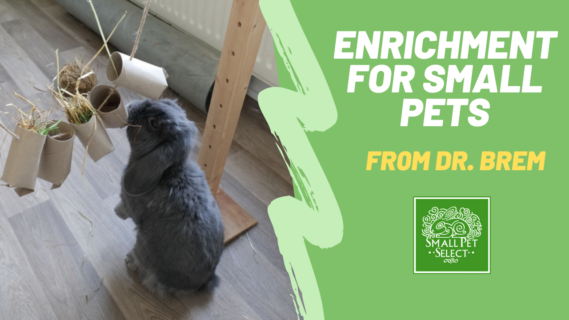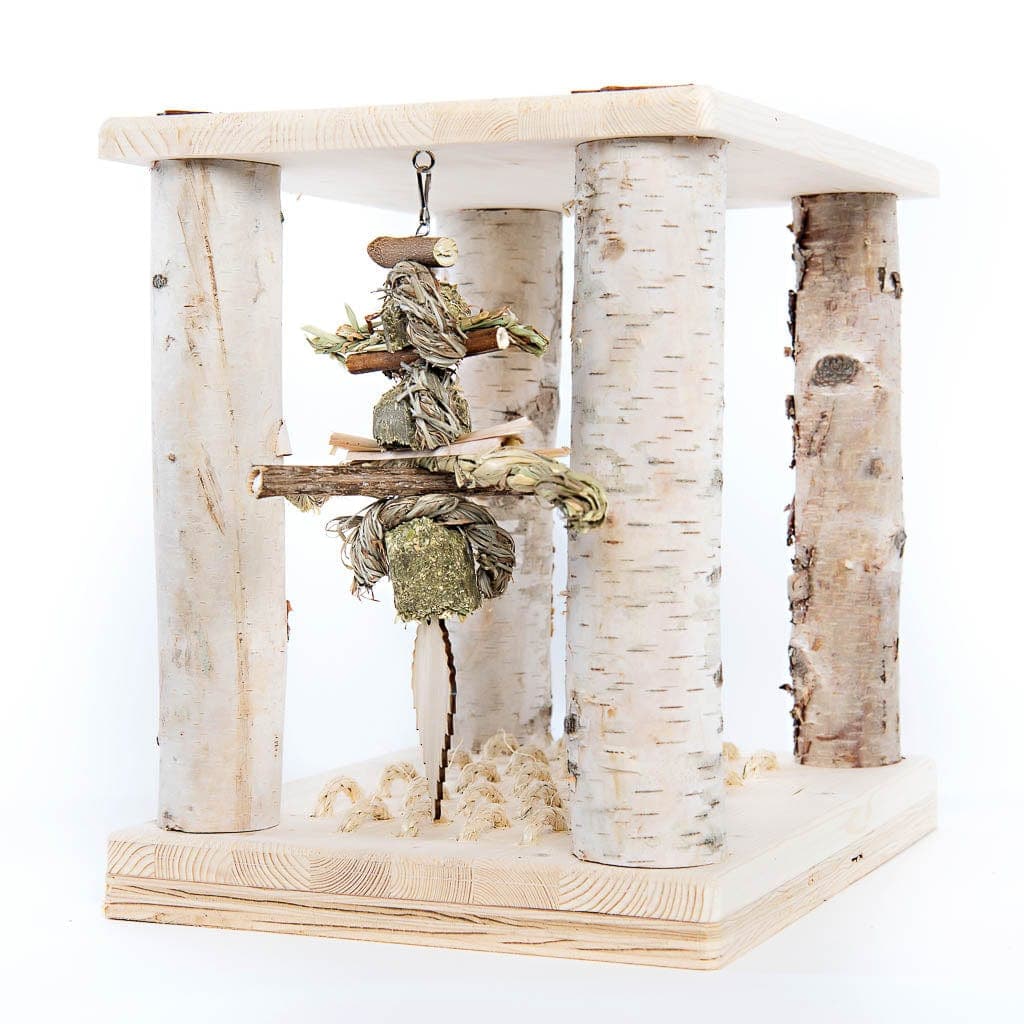Hi, all! It’s a new year, a time when a lot of us refresh our homes, our mindsets, and our routines. Why not extend that outlook to your small pets, too, with some new enrichment ideas? Enrichment for small pets is one of the best parts of pet parenthood!
What Is Enrichment?
Enrichment does not just mean toys, although toys are a part of it! Enrichment refers to an engaging environment that helps pets stay physically and mentally healthy.
With an enriched environment, pets have opportunities to exercise, express normal species behaviors, and thrive. This helps them avoid boredom and frustration and helps them be better able to adjust to changes, which means less anxiety and a better quality of life. As added bonuses for us caretakers, watching them interact with their enriched environment is entertaining and can help improve our bond with them.
Types of Enrichment For Small Pets
Social Enrichment
Social enrichment includes interactions with both you and same-species friends. Most small animal species (with the exception of some breeds of hamsters and individual animals) are most happy with at least one friend.
They can play together, work together to find food and cuddle. Of course, introductions and “dates” should be carefully supervised until pets are fully bonded, and pets should be spayed or neutered if males and females are kept together.
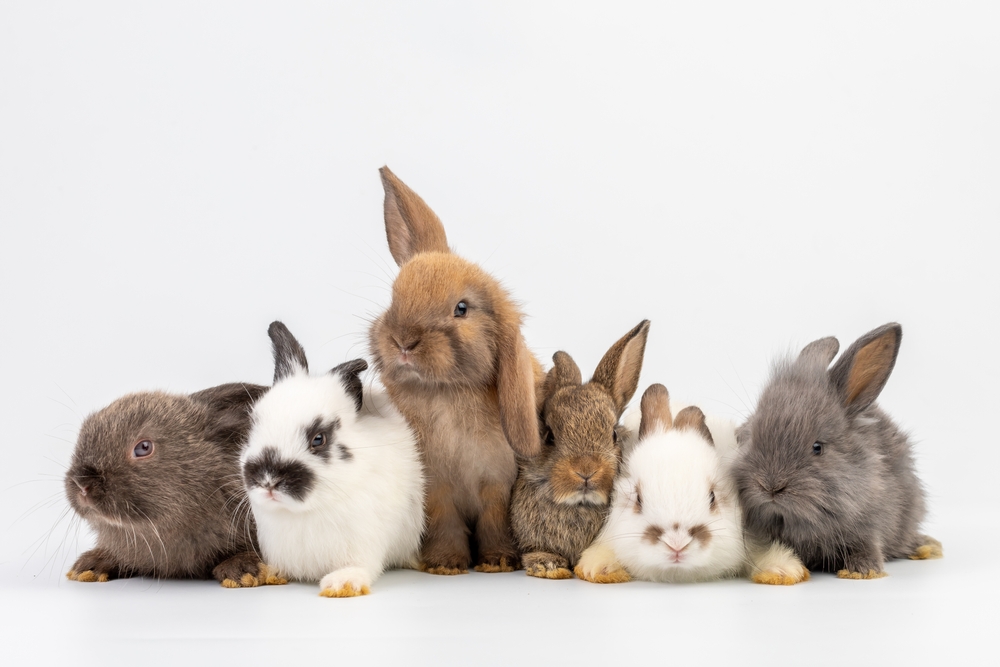
You are also a source of social enrichment for your pets! Playing with them and talking with them enriches their lives. Training can also be fun.
Choose a small treat such as a favorite vegetable and slowly teach tricks such as “shaking” (great for training to be acceptable of nail trims) and putting their mouth on a syringe (great for if you ever have to give medications). My mom taught her Guinea pig the “hot/cold” game to find a carrot slice!
Physical Enrichment
Physical enrichment for small pets refers to an enriching environment. Small mammals naturally dig, chew, climb, run, and burrow. An enriched environment allows for these behaviors. Starting with your pet’s enclosure, it should be as large as possible.
If floor space is minimal (or even if not), the enclosure can have vertical levels to increase the space. This may mean actual floors or perches, hammocks, and boxes pets can climb onto and look over their domain. Pets could even have separate areas like a “dining room” and a “bedroom.”
Bedding
For the smaller small pets, providing a deep enough amount of bedding can be a great form of enrichment by letting them dig and construct tunnels. Bedding should be absorbent and dust-free and not something they want to eat.
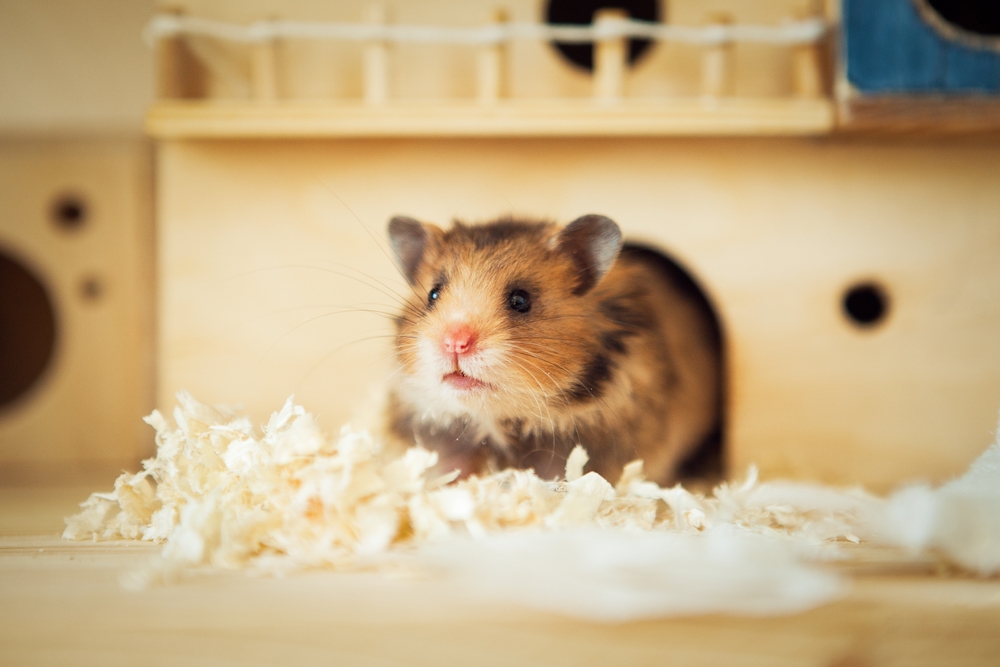
Hideouts
Hiding places are essential for small mammals, as most are considered prey species and should have places where they feel safe. Plastic huts, cardboard boxes, and crumpled packing paper can serve as private rooms, cuddle spots, and tunnels to explore, in addition to items they can move, chew, and flip over.
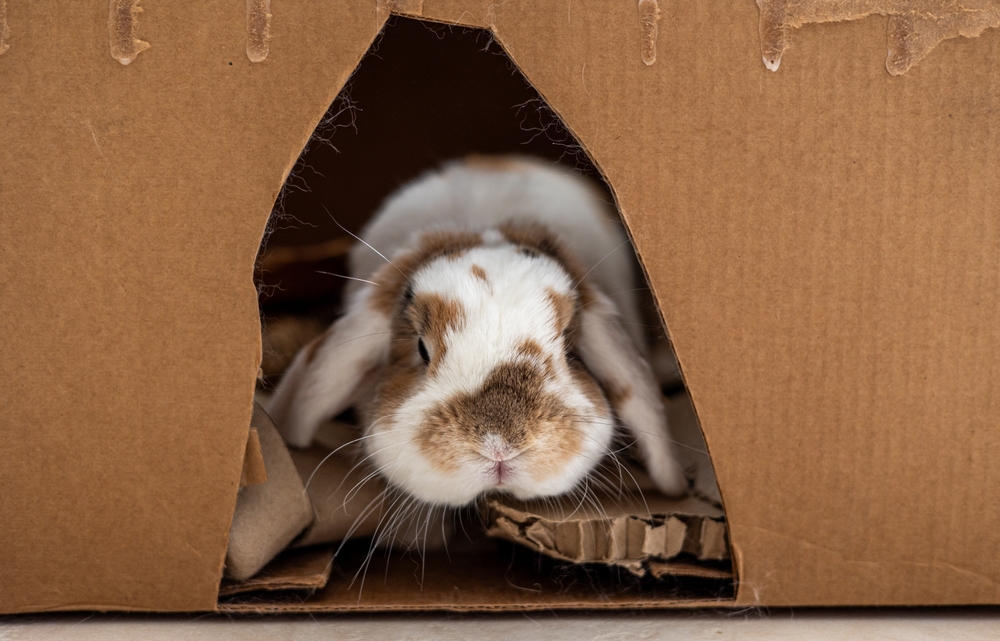
Toys
The toys and exercise “equipment” you provide your small pets are also considered part of physical enrichment. Below are some specific examples, but in general providing toys and chews made from different materials and that have different functions encourages physical activity.
For safety, toys should not be metal, glass, or wire, should not contain anything toxic, and should be cleaned periodically.
Food-Based Enrichment For Small Pets
The basis of food-based enrichment is making your pets work for their dinner (breakfast, whatever). Your pets’ wild counterparts spend most of their day foraging for food; it is a major, natural part of their lives. Providing foraging opportunities mentally stimulates pets by challenging them to find their food and helps them get exercise too.
This could be as simple as scattering pellets throughout their enclosure or bedding instead of putting them into a bowl, or it can involve some creative solutions by you!
For example, you can take empty toilet paper rolls and fill them with hay and some pellets, you can hide pellets or veggies under the sections of egg cartons, you can create holes in a small plastic container that your pet has to move or throw to have pellets come out, and you can place pellets in paper and crumple the paper up into balls.
Sensory Enrichment
Finally, sensory enrichment for small pets entails increasing sensory stimulation – providing new smells, tastes, sounds, sights, and feels. One of the best ways you can offer this is by allowing time every day outside of the enclosure.
Larger pets such as rabbits may be given an entire floor of a home, for example. Litter training and supervision are important in this case, as is ensuring there are no dangerous items such as toxic plants or electrical cords within reach.
Smaller pets can benefit from a folding pen in a room other than where their enclosure is. Allowing pets outdoors is controversial, and I personally shy away from that. There are so many things that can go wrong outdoors, even if you are right there with your pets: predators, pesticides on grass, fly larvae that can get onto a pet’s skin, and temperature extremes to name a few.
Other examples include offering seasonal treats, replacing boxes, providing several hay varieties, and rotating toys with different materials and sounds. Just make sure you don’t introduce too many changes at the same time or too often so that your pets can get used to changes and not be caused stress.
Tips
Remember that just like us, small pets like choice! One pet may not play with a particular toy or want to hang out in a certain box, whereas his or her partner may love it.
When making enrichment objects, consider safety concerns. For example, any holes you poke into cardboard should not cause a foot to become stuck, and loose strings should be tossed so that they don’t wrap around feet. Also, check objects often.
Enrichment can be a way for you to monitor the health of your pets. If a pet usually loves to throw things or forage and suddenly does not, there may be a health issue that warrants a veterinarian visit.
Providing a variety of social, physical, food-based, and sensory enrichment opportunities can help your pets have a great quality of life!
Toy Ideas For Rabbits
Plastic stacking cups and plastic baby rings
Paper bags filled with hay poking out
Cardboard boxes with tubes attached
Treat or pellets placed in an empty, clean pill bottle
Several metal lid rings attached to a plastic shower hook
Toilet paper or paper towel rolls
Hanging chew toys
Leaves of kale or lettuce strung up across the enclosure
Balls made from willow, natural twine, and corn huskToy Ideas For Guinea Pigs
Old (clean) socks filled with hay
Crumpled-up paper with food pellets or treats inside
Bundles of hay to burrow in and under
Untreated wood blocks
Carpeted ramps
PVC tube tunnels
Toy Ideas For Chinchillas
Dust baths (of course!)
Chinchilla solid exercise wheel
Various-sized cardboard boxes
Structures to climb
Shredded paper to dig in
Untreated thick sticks
Rats, mice, gerbils, hamsters, other small rodents
A solid (not wire) exercise wheel
Corn starch baths
Rope climbs
Wooden ladders
Pieces of food stuck into an untreated pine cone
Plastic baby toys
* Note that many of these toys can be used for any small pet!
Copyright 2024 Amy “Brem” Bremers, DVM



